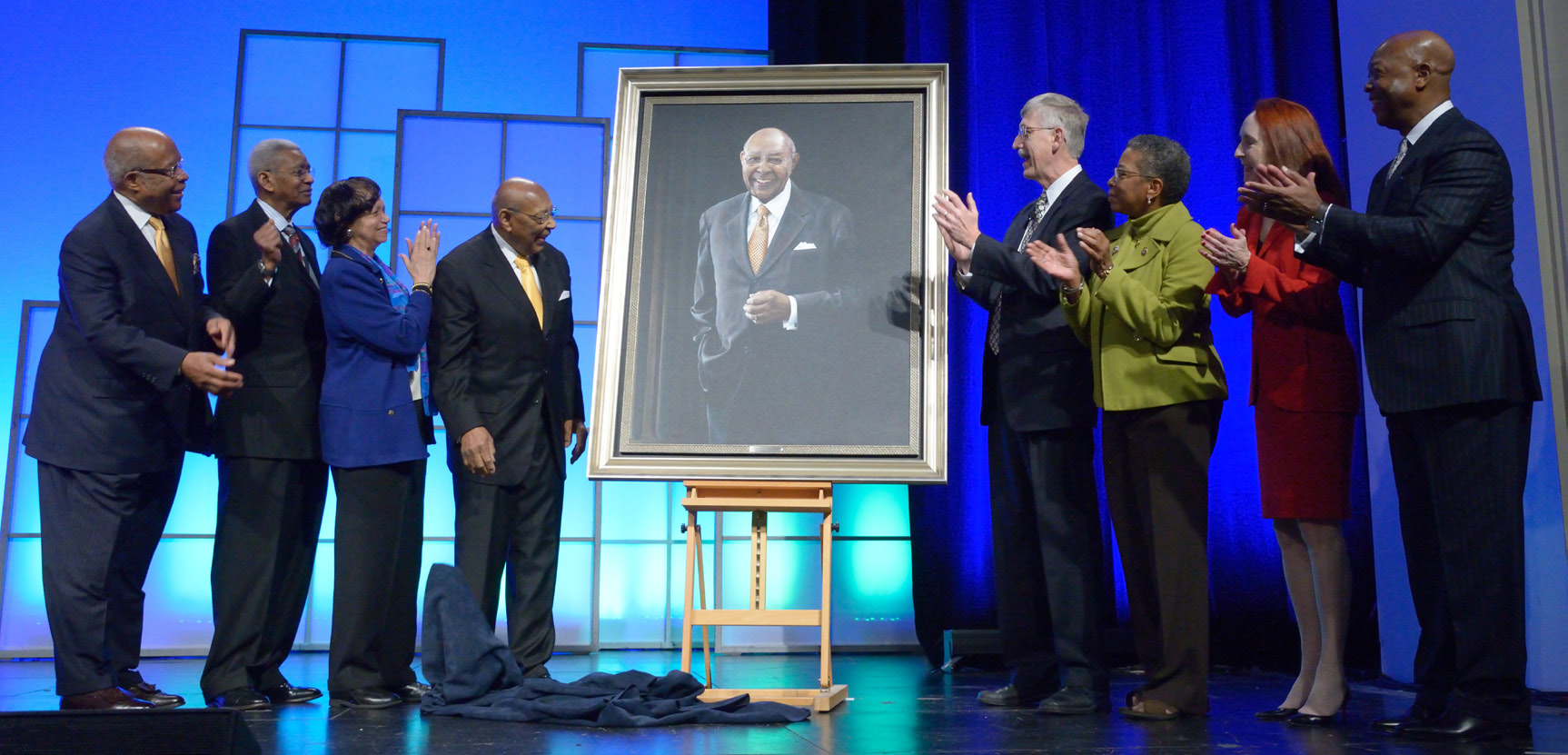“We’ve been at this for far too long,” NIMHD director Dr. John Ruffin told the audience of scientists, health care practitioners, researchers, government leaders, policymakers, community leaders and students during opening remarks. “While we are making incremental progress, it is time to accelerate the pace. It is a daunting challenge, but it is surmountable if you take your role seriously and make your contribution to win this race.”
“We at NIH—aided and encouraged by countless champions, some of whom you see here on the stage—are acutely aware of the persistence of these disparities and you can point to various achievements that have moved us in the right direction,” said Collins. “And now, with the involvement of virtually every institute at NIH, and with a strategic plan to guide us, and with the elevation of NCMHD to become a full-fledged institute, you can see that momentum is building. This summit is a signal moment in that whole course.”
 |
 |
 |
 |
 |
NIH director Dr. Francis Collins calls the summit a “signal moment” in the course to eliminate health disparities.
|
NIMHD director Dr. John Ruffin addresses summit participants.
|
U.S. surgeon general Dr. Regina Benjamin talks about bringing “joy” back into being healthy.
|
HHS assistant secretary for health Dr. Howard Koh says everyone should have access to the “highest attainable standard of health.” |
Dr. Gail Wilensky, economist and senior fellow at Project HOPE, stresses that fixing the economy is key to reducing health disparities. |
The opening ceremony also paid homage to another champion in the race towards health equity—the late Sen. Arlen Specter. Former HHS secretary Dr. Louis Sullivan, Research!America President and CEO Mary Woolley and Collins dedicated the summit to Specter, who was known for his enthusiastic support of medical research and who received a lifetime achievement award at the 2008 summit.
Former surgeon general Dr. David Satcher discussed his global experience with the social determinants of health and posed the question, “What if we were equal?” He stressed that while health disparities have international impact, it is important to remember that change begins in local communities.
His remarks set the tone for plenary sessions on global health that highlighted strategies, policies and models from countries including Brazil, South Africa, the U.S., Canada, Latin America and the Caribbean to combat social, economic and environmental factors that cause health disparities.
Assistant secretary for health Dr. Howard Koh said the audience should use its passion and perseverance to help ensure that every American has access to what the World Health Organization calls the “highest attainable standard of health.”
 |
A portrait honoring former Rep. Louis Stokes is unveiled at the summit.
Photos: Ernie Branson |
Surgeon general Dr. Regina Benjamin discussed the National Prevention Strategy led by her office, stressing that lifestyle changes are not sustainable if people are unhappy. While some people might enjoy running marathons, for others, the motivation is fitting into an old pair of jeans. “We have to make being healthy a joy,” she said, calling her new way of thinking a “journey to joy.”
Other plenary sessions emphasized the importance of building coalitions and thinking strategically about the business of health care to increase disease prevention. Dr. Gail Wilensky, economist and senior fellow at Project HOPE, proposed that the health care system should provide incentives to institutions and clinicians who provide high quality, efficient care and reduce disparities and reward those consumers who lead healthy lifestyles. She also stressed that fixing the economy was the key to reducing disparities.
The day ended with a spirited town hall meeting on building a healthier global society, moderated by Dr. Prerna Mona Khanna of Fox Chicago News.
As a testament to the summit’s theme of “Integrating Science, Practice and Policy,” policymakers addressed the crowd during the final plenary session. Citing a small nursing school in his district that has some of the highest graduation rates in the country, Rep. Elijah Cummings (D-MD) stressed that the students were so successful because they had grown up with relatives who had suffered from unequal health care.
“They took their pain, turned it into a passion and used it to fulfill their purpose,” he said, to thundering applause.